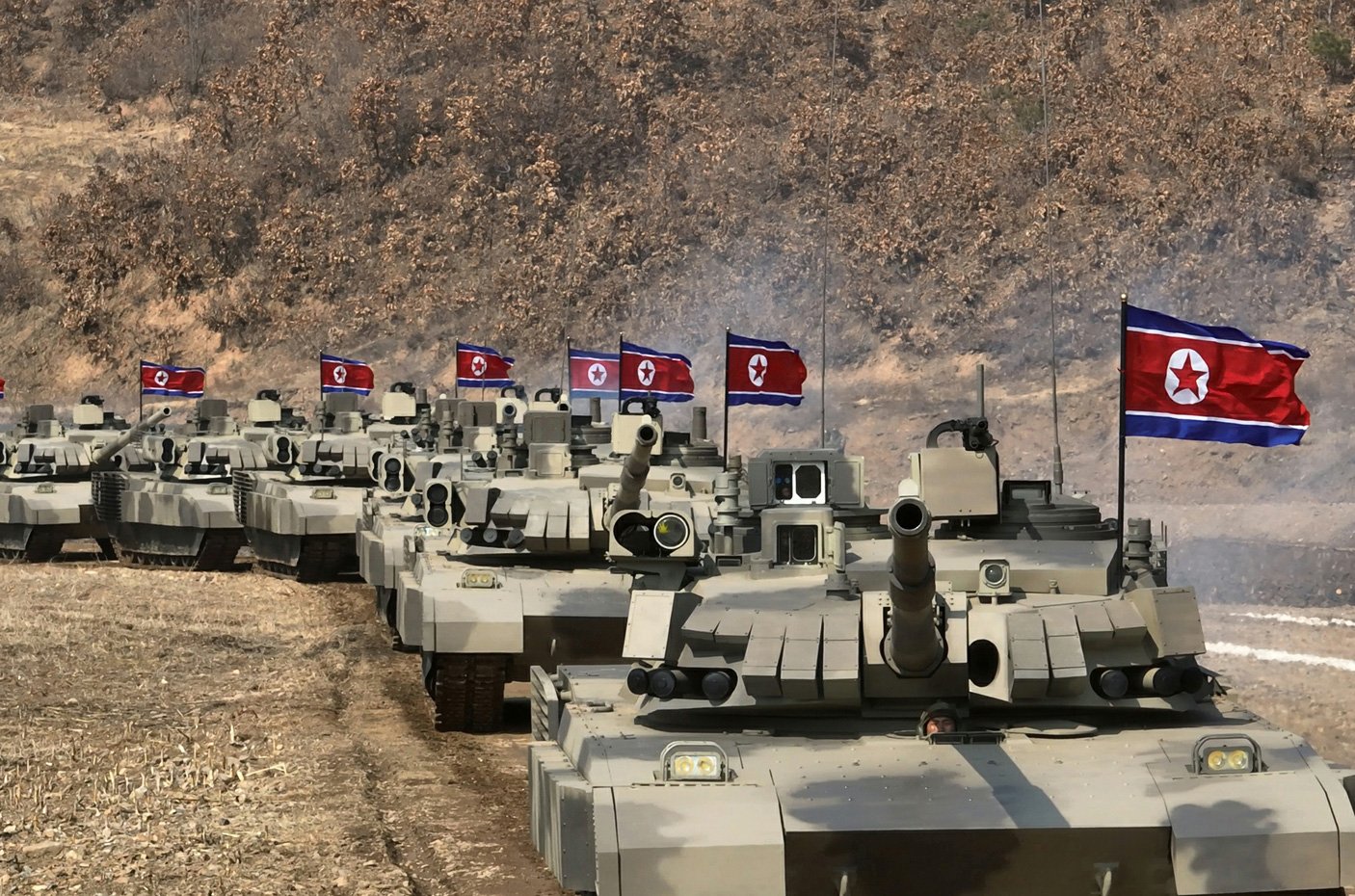Heavy rains ‘escalate’ tensions between North and South Korea; Seoul fears North’s landmines could seep into country

A particular Concern has gripped the Korean peninsula amid rising tensions that landmines planted by North Korea could be carried south by torrential rains and floods.
F-16s: Easy Targets for Russian MiG-31 Fighters? Putin Warns of Consequences of Falcon War
The South Korean military warned on July 17 that flooding could carry landmines from North Korea into the country. South Korea’s Joint Chiefs of Staff (JCS) informed local reporters that summer flooding could carry the mines across the border.
The JCS also expressed concern that North Korea may deliberately float mines downstream of the river as a provocation. It said the DPRK appeared to have released water from a dam on the Imjin River without warning on Wednesday, warning South Korean civilians to move cautiously downstream.
This raises concerns about rain carrying North Korean mines.

Seoul’s warning comes after North Korea recently placed tens of thousands of deadly mines along its heavily guarded border. North Korea began fortifying its border with the South last April.
Forget J-20, China’s H-20 Stealth Bomber Threatens ‘Easy Penetration’ of LAC; How Can IAF Respond?
In addition to laying mines on a large scale, this operation includes erecting anti-tank barriers and reinforcing roads. In fact, satellite images have revealed that sections of walls are also being built at several locations near its border with South Korea.
South Korean officials say North Korea wants to strengthen its security posture on the front lines and prevent its soldiers and citizens from defecting to their country. The move comes amid heightened tensions between the two Koreas.
North Korean landmines could be washed into South Korea by floods, Seoul warns: North Korean landmines could be washed into South Korea by floods, the South Korean military warned Wednesday, after the North recently planted tens of thousands of… https://t.co/jkcovnrSr6 pic.twitter.com/f7G4aTRAtz
— JPNWMN (@JPNWMN) July 17, 2024
Tensions between the two sides flared last month when North Korea launched hundreds of balloons filled with trash toward the South to express its disapproval of a campaign by activists and defectors from the North Korean dictatorship who have for years flown aid packages and leaflets critical of Kim’s regime across the heavily guarded border.
More recently, North Korea claimed that the South had sent at least 29 balloons carrying anti-Pyongyang leaflets into its country. Kim Yo Jong, the sister of North Korean leader Kim Jong-un, issued a stern warning to South Korea that it would face devastating consequences if it dropped the leaflets.
North Korea has said South Korea should be prepared to pay a “very heavy price” for sending anti-DPRK leaflets to North Korea.
Additional leaflets were discovered by the Korean People’s Army and the Workers’ and Peasants’ Red Guards.
KCNA released a photo of a discovered leaflet. pic.twitter.com/l6pqoBJiWc
— Global: Military-Info (@Global_Mil_Info) July 14, 2024
While neither side has engaged in any overt aggression, these microaggressions have fueled tensions, with both sides warning of escalation. Last month, the South Korean military fired warning shots after several North Korean soldiers crossed the border, forcing North Korean troops to retreat.
In recent years, tensions between the two rival Koreas have escalated, with North Korea continuing to test provocative weapons and South Korea stepping up military exercises with the United States in a spirit of retaliation. In this context, the threat of landmines that have been flooding into South Korea could further aggravate the situation.


Experts say both Koreas have mismanaged their mines and have no idea how many or where they are. In summer, the North’s wooden mine boxes are frequently swept away by the current, causing fatal accidents in South Korea. In 2015, a mine explosion blamed on North Korea injured two South Korean soldiers and brought the rivals dangerously close to war.
Seoul, however, deplores that despite the threat that these mines pose to populations on both sides, Pyongyang continues to lay thousands of landmines along the border.

North Korea’s mine-laying is risky
South Korea recently told media that tens of thousands of additional landmines had been planted by North Korea along the border, causing harsh working conditions for its forces and causing many casualties.
South Korea’s defense ministry said there had been at least 10 incidents of mine explosions during the months-long operation to improve defenses along the demilitarized zone, which is already one of the most densely mined places in the world, resulting in “multiple casualties” among soldiers.
“Despite the sweltering heat and the monsoon season, the North Korean military has been laying mines and erecting protective walls along frontline areas,” Seoul’s Joint Chiefs of Staff said in a statement. “The number of newly laid mines is estimated to be in the tens of thousands.”
North Korea has placed landmines on an inter-Korean road within the DMZ, South Korean military officials told Yonhap.
North Korea carried out similar actions late last year and early this year. South Korean officials believe North Korea will carry out further actions to… pic.twitter.com/XhQ03UbKL5
— Global: Military-Info (@Global_Mil_Info) April 29, 2024
According to the ministry, North Korean soldiers mobilized for the project live in “inadequate barracks conditions, with no weekends or change of duty, working an average of 12 to 13 hours a day.”
The JCS did not provide an estimate of how long the operation would last, but it estimated that North Korea had laid tens of thousands of mines in the demilitarized zone (DMZ). It released images of two types of DPRK landmines that have been discovered recently — wooden box mines and leaf-shaped plastic mines — and advised people to exercise caution when engaging in outdoor activities.
The official cited recent remarks by Kim Yo Jong, the DPRK leader’s sister, and said the military was monitoring whether North Korea was using floodwaters to move mines as a means of retaliation for anti-regime leaflets distributed by South Korean activists.
South Korea has also stressed that in addition to potential incursions into southern territory, the South Korean military is prepared for “defections” of North Korean soldiers who are forced to work in such “unfavorable working conditions.”
News Source : www.eurasiantimes.com
Gn world


